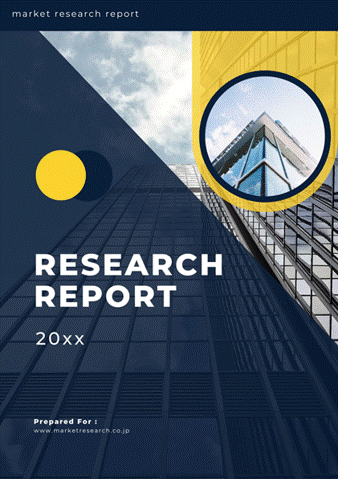 | • レポートコード:D0-MOR-AP0170 • 出版社/出版日:Mordor Intelligence / 2020年4月20日 • レポート形態:英文、PDF、187ページ • 納品方法:Eメール(受注後2-3営業日) • 産業分類:農業 |
| Single User | ¥629,000 (USD4,250) | ▷ お問い合わせ |
| Team User | ¥703,000 (USD4,750) | ▷ お問い合わせ |
| Corporate License | ¥1,110,000 (USD7,500) | ▷ お問い合わせ |
• お支払方法:銀行振込(納品後、ご請求書送付)
レポート概要
| 本調査レポートは、生物学的有機肥料の世界市場について調査・分析した資料で、生物学的有機肥料の市場概要、動向、セグメント別市場規模、地域別分析、競争状況、企業情報、市場機会分析などで構成されています。 |
Market Overview
The biological organic fertilizer market is projected to grow at a CAGR of 13.3% during the forecast year (2019-2024). The increased practice of organic farming is one of the major factors behind the growth of the biological organic fertilizer market. The emphasis on sustainable farming and government support to the manufacturers are two other factors that are augmenting the growth of the market.
Scope of the Report
Organic fertilizers are derived from many animal and plant-based residues and mineral ores; they are also developed from beneficial microorganisms. Biofertilizers or microbial inoculants are carrier-based ready-to-use live bacterial or fungal formulations, which on application to plants, soil or composting pits, helps in mobilization of various nutrients by their biological activity. Biological organic fertilizers add nutrients through the natural processes of fixing atmospheric nitrogen, solubilizing phosphorus and stimulating plant growth through the synthesis of growth-promoting substances.
Key Market Trends
Increased practise of organic farming is driving the market
The growth of the organic food industry is driving the organic fertilizer market. Increased environmental concerns have paved the way for the use of bio-based organic fertilizers. The growth in the rate of adoption of sustainable farming and increasing costs of chemical fertilizers are other driving factors for the market. The push from governments towards sustainable farming in many developing countries is expected to help maintain steady growth in the market.
Asia Pacific dominates the market
The regional organic fertilizers market is divided into two major segments namely organic residue based fertilizers and microorganism (biofertilizers) depending on the source of nutrients and raw materials. More than half of the market share is covered by microorganism based organic fertilizers. The consumption of organic fertilizers in Asia-Pacific is expected to increase with rising awareness among the farmers about the benefits of bio-based and organic residue based fertilizers. The regional demand is concentrated among major agriculture-based countries like China, India, and Vietnam while China and India are leading the market developments. The organic fertilizer market in Asia-Pacific is the fastest growing among all the other regions. The key players in the market are focused on new product launch to cater to a wider consumer base and expand market share in the local market.
Competitive Landscape
The biological organic fertilizer market is fragmented owing to the presence of large international as well as local markets. Collaborations with government organizations and expansion in the market along with product innovation are some of the strategies adopted by the companies.
Reasons to Purchase this report:
– The market estimate (ME) sheet in Excel format
– Report customization as per the client’s requirements
– 3 months of analyst support
1 INTRODUCTION
1.1 Study Deliverables
1.2 Study Assumptions
1.3 Scope of the Study
2 RESEARCH METHODOLOGY
3 EXECUTIVE SUMMARY
4 MARKET DYNAMICS
4.1 Market Overview
4.2 Introduction to Market Drivers and Restraints
4.3 Market Drivers
4.4 Market Restraints
4.5 Market Opportunities
4.6 Industry Attractiveness – Porter’s Five Force Analysis
4.6.1 Bargaining Power of Suppliers
4.6.2 Bargaining Power of Buyers/Consumers
4.6.3 Threat of New Entrants
4.6.4 Threat of Substitute Products
4.6.5 Intensity of Competitive Rivalry
5 MARKET SEGMENTATION
5.1 Type
5.1.1 Microorganism
5.1.1.1 Rhizobium
5.1.1.2 Azotobacter
5.1.1.3 Azospirillum
5.1.1.4 Blue-green Algae
5.1.1.5 Phosphate solubilizing bacteria
5.1.1.6 Mycorrhiza
5.1.1.7 Others
5.1.2 Organic residues
5.1.2.1 FYM
5.1.2.2 Crop residues
5.1.2.3 Green manure
5.1.2.4 Others
5.2 Application
5.2.1 Cereals
5.2.2 Legumes
5.2.3 Fruits and Vegetables
5.2.4 Plantations
5.2.5 Others
5.3 Geography
5.3.1 North America
5.3.1.1 United States
5.3.1.2 Canada
5.3.1.3 Mexico
5.3.1.4 Rest of North America
5.3.2 Europe
5.3.2.1 Germany
5.3.2.2 United Kingdom
5.3.2.3 France
5.3.2.4 Spain
5.3.2.5 Italy
5.3.2.6 Russia
5.3.2.7 Rest of Europe
5.3.3 Asia Pacific
5.3.3.1 China
5.3.3.2 Japan
5.3.3.3 India
5.3.3.4 Australia
5.3.3.5 Rest of Asia-Pacific
5.3.4 South America
5.3.4.1 Brazil
5.3.4.2 Argentina
5.3.4.3 Rest of South America
5.3.5 Africa
5.3.5.1 South Africa
5.3.5.2 Rest of Africa
6 COMPETITIVE LANDSCAPE
6.1 Most Adopted Competitor Strategies
6.2 Market Share Analysis
6.3 Company Profiles
6.3.1 Rizobacter Argentina S.A.
6.3.2 Lallemand Inc.
6.3.3 National Fertilizers Limited
6.3.4 Madras Fertilizers Limited
6.3.5 Gujarat State Fertilizers & Chemicals Ltd
6.3.6 T Stanes & Company Limited
6.3.7 Camson Bio Technologies Limited
6.3.8 Rashtriya Chemicals & Fertilizers Ltd
6.3.9 Antibiotice S.A.
6.3.10 Biomax
6.3.11 Symborg
6.3.12 Agri Life
6.3.13 Premier Tech
6.3.14 Biofosfatos do Brasil
6.3.15 Neochim
6.3.16 Bio Protan
6.3.17 Circle-One Internatiomal, Inc.
6.3.18 Bio Nature Technology PTE Ltd.
6.3.19 Kribhco
6.3.20 CBF China Biofertilizer A.G
7 MARKET OPPORTUNITIES AND FUTURE TRENDS